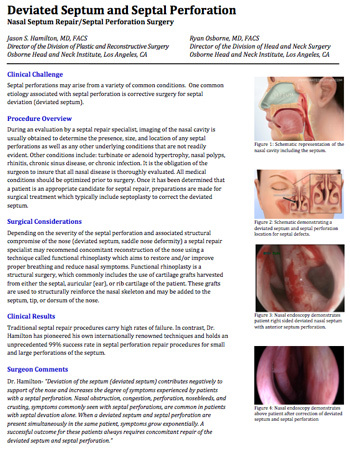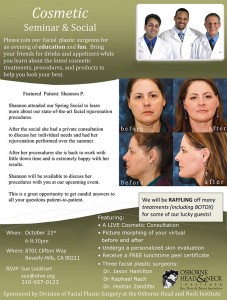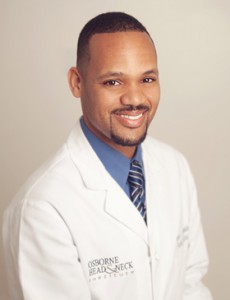- Hereditary Hemorrhagic Telangiectasia - May 25, 2016
- Hereditary Hemorrhagic Telangiectasia: Septal Perforation and Nose Bleeds - May 23, 2016
- Hereditary Hemorrhagic Telangiectasia: Epistaxis and Septal Perforation - May 18, 2016
- Wegener’s Granulomatosis: Autoimmune Disease and Multi-Focal Septal Perforation - May 9, 2016
- Kyle Korver: Facial Injury and Nasal Fracture - March 24, 2015
- Russell Westbrook: Facial Injury and Surgery - March 5, 2015
- Mega-perforation: Pushing the Limits of Septal Perforation Repair - November 26, 2014
- Septoplasty Complication and Septal Perforation - November 24, 2014
- Nose Picking (Rhinotillexis) and Septal Perforations: Why I should stop picking my nose…? - November 24, 2014
- Nasal Fractures, Septal Hematoma, and Septal Perforation: Simultaneous Rhinoplasty and Septal Perforation Repair - October 1, 2014
Nasal Septum Repair/Septal Perforation Surgery
| Jason S. Hamilton, MD, FACS Director of the Division of Plastic and Reconstructive Surgery Osborne Head and Neck Institute, Los Angeles, CA |
Ryan Osborne, MD, FACS Director of the Division of Head and Neck Surgery Osborne Head and Neck Institute, Los Angeles, CA |
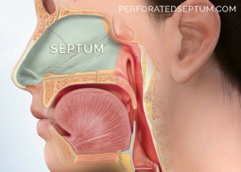
CLINICAL CHALLENGE
Septal perforations may arise from a variety of common conditions. One common etiology associated with septal perforation is corrective surgery for septal deviation (deviated septum).
PROCEDURE OVERVIEW
During an evaluation by a septal repair specialist, imaging of the nasal cavity is usually obtained to determine the presence, size, and location of any septal perforations as well as any other underlying conditions that are not readily evident. Other conditions include: turbinate or adenoid hypertrophy, nasal polyps, rhinitis, chronic sinus disease, or chronic infection. It is the obligation of the surgeon to insure that all nasal disease is thoroughly evaluated. All medical conditions should be optimized prior to surgery. Once it has been determined that a patient is an appropriate candidate for septal repair, preparations are made for surgical treatment which typically include septoplasty to correct the deviated septum.
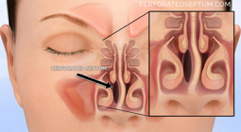
SURGICAL CONSIDERATIONS
Depending on the severity of the septal perforation and associated structural compromise of the nose (deviated septum, saddle nose deformity) a septal repair specialist may recommend concomitant reconstruction of the nose using a technique called functional rhinoplasty which aims to restore and/or improve proper breathing and reduce nasal symptoms. Functional rhinoplasty is a structural surgery, which commonly includes the use of cartilage grafts harvested from either the septal, auricular (ear), or rib cartilage of the patient. These grafts are used to structurally reinforce the nasal skeleton and may be added to the septum, tip, or dorsum of the nose.
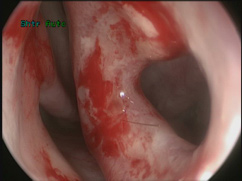
CLINICAL RESULTS
Traditional septal repair procedures carry high rates of failure. In contrast, Dr. Hamilton has pioneered his own internationally renowned techniques and holds an unprecedented 99% success rate in septal perforation repair procedures for small and large perforations of the septum.
SURGEON COMMENTS
Dr. Hamilton- “Deviation of the septum (deviated septum) contributes negatively to support of the nose and increases the degree of symptoms experienced by patients with a septal perforation. Nasal obstruction, congestion, perforation, nosebleeds, and crusting, symptoms commonly seen with septal perforations, are common in patients with septal devation alone. When a deviated septum and septal perforation are present simultaneously in the same patient, symptoms grow exponentially. A successful outcome for these patients always requires concomitant repair of the deviated septum and septal perforation.”
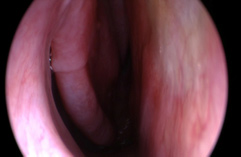
Dr. Jason Hamilton is the Director of Plastic and Reconstructive Surgery for the Osborne Head and Neck Institute, is double board certified by the American Board of Facial Plastic and Reconstructive Surgery and the American Board of Otolaryngology/Head and Neck Surgery, and is one of only handful of septal perforation specialist worldwide
For more information on the deviated septum, septoplasty, functional rhinoplasty and septal perforation repair by Dr. Jason Hamilton, septal perforation specialist, please contact the Osborne Head and Neck Institute or visit www.perforatedseptum.com

